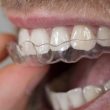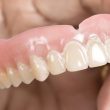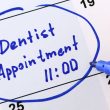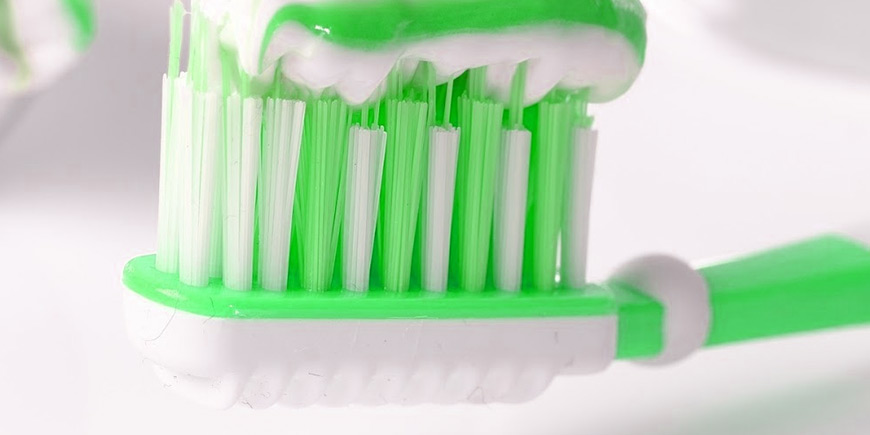Table of Contents
Choosing a toothbrush sounds easy and even unimportant, right? But if you have ever paid attention to the wide variety of brushes that are sold in pharmacies and supermarkets, you know how easy it is to get confused or wrong among so many options.
Some toothbrush packaging promises fresh breath, deep cleaning, and even teeth whitening. Others claim to be specially designed for orthodontics or patients using prosthetics. While these special features may seem attractive and tempting, it is best to ask your Dentist if you need them or are right for you.
However, there are some basic concepts about the toothbrush that everyone should know. The recommendations we present below should make your search and selection process that much easier. Pay attention!
What to Look For in a Toothbrush
The right toothbrush can help turn poor oral hygiene habits into good ones. Without proper brushing and flossing techniques, your teeth and gums can become especially vulnerable to cavities, dental plaque, tartar, and gum disease. Do not let that happen, use these guidelines to choose your toothbrush, but above all; choose one that you like and make you feel comfortable with. The more you like your toothbrush, the more likely you are to brush correctly and at the prescribed frequency.
Here are the most suitable properties for the vast majority of people:
Avoid Very Hard Bristles Brushes
It may seem that a toothbrush with rigid bristles is the best option; since it is logical to think that it will clean better and in a faster and easier way.
But the opposite is actually the case, and the reason is simple: softer bristles are gentler on the gums. When brushing, we want to clean the teeth, not traumatize and make the gums bleed. A stiff-bristled toothbrush is very likely to cause gingival trauma. However, do not choose a toothbrush that is labeled “soft” unless your Dentist has instructed it. A “medium” bristle brush is the best option.
Always Go for Nylon
There are a large number of natural dental products available that are environmentally friendly. You may have even heard of something called “eco-friendly toothbrushes,” with bristles made from the root of the arach tree, a plant belonging to the Salvadoraceae family. Other natural toothbrushes have brown bristles that are reportedly softer than nylon bristles.
While you may be curious or “eco-conscious” to try a natural toothbrush, keep in mind that little research has been done on its effectiveness.
Natural toothbrushes can also be more expensive and wear out faster than standard toothbrushes. Until there is more information on natural toothbrushes, it is probably best to stick with an ADA (American Dental Association) recommended toothbrush with medium soft nylon bristles.
Be Careful with the Size
When we talk about the head of a toothbrush, we could also think that the bigger the better. But it is not always like this. If you have a small mouth, a toothbrush with a large head can prevent the tilting movements needed to brush hard-to-reach areas. Choose one that matches the size of your mouth.
Look at the Handle
Toothbrush handles are often colorful, sometimes translucent or even shimmering. But do not be fooled by the attractive design or how pretty a toothbrush looks on its packaging.
What you should really care about is getting a brush with a handle that feels comfortable in your hand and is easy to maneuver. Pay attention to slip-resistant surfaces, especially if you have low skill, arthritis, or a motor limitation.
Remember that a Toothbrush Is Something Almost Disposable!
Due to daily use, all toothbrushes wear out easily, lose their sweeping efficiency; and can even become a perfect breeding ground for germs, fungi and bacteria. Who wants that?
To boost to the maximum your oral hygiene technique, replace the toothbrush frequently, no later than 3 months. If you recently had a cold or mouth infection, you may have housed a lot of germs on your toothbrush, so be sure to use a new one when exiting the process.
Do Not Discard the Electric Toothbrush
Electric toothbrushes were a great novelty in the past, but today they are almost as common as manual toothbrushes. And while many Dentists (including ourselves) believe that electric toothbrushes are no more effective than a manual toothbrush, many patients say that they make brushing more fun. Electric toothbrushes can also be a good option for arthritis patients or older people who have limited mobility.
Like manual toothbrushes, there are many electric toothbrushes to choose from: some are powered by electricity and some are battery powered, some pulse, some rotate (or pulse and rotate), and some vibrate at “sonic” speed. Your Dentist can help you make the best decision based on your dental health, but there are some features to consider when choosing an electric toothbrush:
Does It Have a Timer?
Many electric toothbrushes are equipped with timers that indicate when the patient has brushed the appropriate time. This is very useful to correctly distribute the total brushing time (between 2 and 3 minutes) by zones or quadrants.
Does It Have a Sensor?
Some electric toothbrushes are equipped with sensors that stop vibrations if you brush too hard. This is a great help for anyone who has a tendency to vigorously brush their teeth, which can damage their teeth and gums.
Is It in Your Price Range?
Prices for electric toothbrushes can range from $5 to $200 American dollars, or the equivalent in local currency. While cheap battery-operated toothbrushes offer extra help at a low price, keep in mind that you will need to replace them as often as you would with a manual toothbrush.
With more expensive electric toothbrushes like the Sonicare® and Oral-B®, you will pay more up front, but then you only have to change the brush heads every 3-6 months.
Is the Charger Compact?
It is easy to overload your bathroom countertop with different products and tools. So if it is already collapsed, you can consider an electric toothbrush that has a compact charger and can be placed anywhere.
Is There a Guarantee?
Paying a lot of money for an electric toothbrush is often an unanticipated expense. Protect your investment by buying an electric toothbrush that comes with a manufacturer’s warranty, and buy it from a reputable supplier that has good return policies.
Children’s Toothbrushes
In some ways, it is always easier to choose a child’s toothbrush. The first thing is always to consider his age, since most manufacturers design them taking into consideration the average motor skills for his time of development. In addition, they always indicate it on the packaging.
Another 2 important recommendations is that it be made of soft nylon bristles and that it has the seal of approval of the ADA (American Dental Association).
The Pediatric Dentist will also be able to make very good recommendations, so go ahead and ask him.
“Medium Stiff Nylon Bristles, Non-Slip Handle and Proper Size; Are the Main Characteristics to Consider When Selecting a Manual Toothbrush”.
DENTAL TIP
But Always Remember: The Most Important Thing Is Not the Brush, But the Technique!
“He who hits well, hits with any bat.” And it is very true!
The essence of oral hygiene lies in the mechanical act of “sweeping” the remains of food and dental plaque present in the oral cavity. For this, it is essential that patients learn and develop very specific techniques and skills, and that they also complement them with auxiliary resources such as dental floss, interdental brushes and oral irrigators; when the case warrants it.
Of course that having a good brush, a good toothpaste and a good mouthwash are factors that make the process easier and more pleasant, but only for those who are really interested in applying a correct technique.
In the market you will find millions of offers on toothbrushes, with packaging that highlights their supposed properties with very aggressive marketing messages such as: anatomical, ultra-anatomical, special, novel designs, with self-cleaning bristle filaments and other things like that; but in the end, 99% of the effectiveness of a toothbrush will depend on its handling and not on its design.
How to Save Thousands by Getting Dental Work in Venezuela
On average, dental work in Venezuela is about a third the price of what you are used to paying at home, without a drop in the quality of care. All the process takes is just a little research and a few more logistics. In the “Dental Tourism” category of this same blog we describe all the considerations necessary to get dental care done in Venezuela.
The first thing you want to do is get a quote for the dental work you need done by our team. Most of the time, simply sending a few photos and X-rays to us will do just fine. The online consultation will provide a strong idea of what will need to be done, and will be able to provide you with a pretty close cost estimate for the dental procedures.
Through our WhatsApp or Email you can ask all the necessary questions about the proposed treatment and its details. DENTAL VIP has specially trained personnel for this function.
Once the quote is approved, you must indicate the date of your trip to corroborate the treatment viability in the selected period, ensure your accommodation and proceed with the purchase of air tickets.
Congrats! Now you are on your way to saving thousands by getting dental work in Venezuela.












